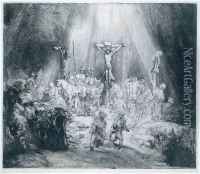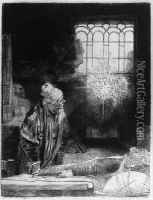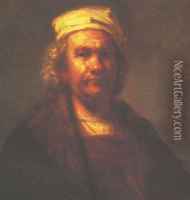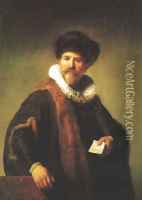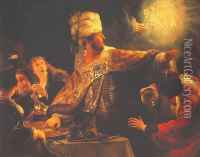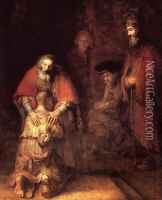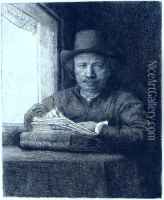Harmenszoon van Rijn Rembrandt Paintings
Rembrandt Harmenszoon van Rijn, known simply as Rembrandt, was born on July 15, 1606, in Leiden, in the Dutch Republic, now the Netherlands. He was the ninth child of a well-off miller, Harmen Gerritszoon van Rijn, and his wife, Neeltgen Willemsdochter van Zuytbrouck. Rembrandt's early education was focused on the Bible and religion; however, his true passion was art. Recognizing his talent, his parents sent him to study under the Leiden history painter Jacob van Swanenburgh, and later, with the famous Amsterdam artist Pieter Lastman, known for his historical scenes.
Rembrandt quickly established himself as a master in both portrait and historical painting, moving back to Leiden in 1625 where he opened his own studio. By 1629, he had gained the attention of the influential statesman Constantijn Huygens, which led to commissions from the court of The Hague. This recognition prompted his move to Amsterdam in 1631, where he began working as a professional portraitist for the city's wealthy citizens. His work from this period is characterized by dramatic use of light and shadow, and a focus on realism and emotional depth.
In Amsterdam, Rembrandt's personal and professional life flourished. He married Saskia van Uylenburgh in 1634, who was the cousin of a successful art dealer that helped Rembrandt establish his career in the city. Together, they had four children, although only one, Titus, survived into adulthood. Saskia's death in 1642 deeply affected Rembrandt, and his work from this period, including the famous 'The Night Watch' (1642), reflects a deeper, more somber introspection.
Despite his success, Rembrandt faced financial difficulties due to his extravagant spending and poor financial management. By 1656, he was forced to declare bankruptcy and sell most of his paintings and his large collection of antiquities. These hardships, however, did not hinder his productivity or creativity. The later years of his life were marked by a series of masterful etchings and paintings that focused on biblical and mythological themes, characterized by a more contemplative and introspective approach.
Rembrandt's influence on art was profound and long-lasting, pioneering new techniques in lighting, composition, and emotion that would inspire countless artists in the centuries to follow. He is celebrated as one of the greatest painters in European art history and the most important in Dutch history. Rembrandt died on October 4, 1669, in Amsterdam, but left behind a legacy that forever changed the world of art.

![David and Uriah [detail]](https://www.niceartgallery.com/pic/6fec81a3/320366s.jpg)


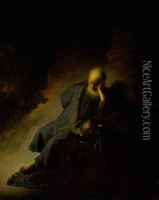

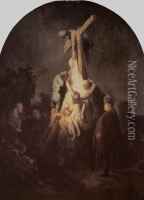

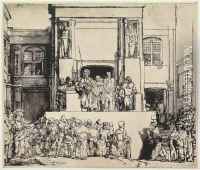
![The Return of the Prodigal Son [detail]](https://www.niceartgallery.com/pic/acdddb5c/262135s.jpg)
